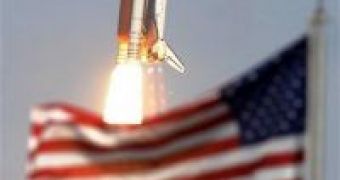This time Atlantis had no more problems with the external fuel tank fill up and cleared the launch pad right as scheduled, at 2:45 p.m. ET, from the Kennedy Space Center in Florida. The space shuttle is carrying the European space module Columbus to the International Space Station, where it will remain for the next seven years.
Incredible as it may seen, the Columbus space laboratory has been commissioned by the ESA board nearly 23 years ago, cost two billion U.S. dollars to build, and waited for years before it could be flown to the ISS. The Atlantis space shuttle was supposed to fly to the ISS with the module two months ago, but multiple problems with the fuel-gauge sensors delayed the launch. NASA feared that the same outcome situation would have been experienced during the countdown yesterday, this time due to bad weather.
In the last days, cold masses of air came over the North American continent spawning a series of tornadoes, rain and thunder storms, but NASA got lucky as such meteorological phenomenons stayed far away from Florida. Although the sky was rather cloudy at the time of the liftoff, launch director Doug Lyons gave the 'go for launch' approval and Atlantis reached for the sky. A few hundred Europeans gathered at the Kennedy Space Center, to view as the space shuttle carries Europe's contribution to the ISS into space.
It was a close call, say NASA officials, as another delay would have endangered the six launches a year schedule, so that the build of the ISS would be finished before 2010, when the U.S. plans to retire the space shuttles and to replace them with a new spacecraft design. In the following month, the space shuttle Endeavor is scheduled to fly JAXA's space laboratory Kibo, meaning 'hope'.
Atlantis should rendezvous with the ISS on Saturday and start the docking of the laboratory on Sunday. The mission involves three separate spacewalks spanning over a period of 11 to 12 days. On top of the build and maintenance of the ISS, the STS-122 mission will replace part of the crew of the space station. Daniel Tani will be replaced by French astronaut Leoplod Eyharts, and returned to Earth after a four month mission.
NASA administrator Michael Griffin argues that the six launches a year schedule is achievable, unless the remaining three space shuttles experience severe malfunctions such as the one that led to the loss of the Columbia space shuttle.

 14 DAY TRIAL //
14 DAY TRIAL //